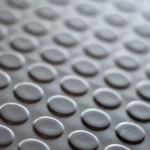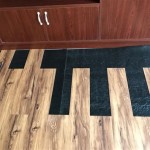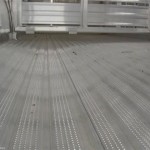Best Flooring for Basement Laundry Rooms: A Comprehensive Guide
Choosing the right flooring for a basement laundry room requires careful consideration of several factors. Basements, by their nature, are prone to moisture, potential leaks, and humidity fluctuations. Laundry rooms introduce additional challenges in the form of spills, detergent residue, and the vibrations from washing machines and dryers. Therefore, the ideal flooring option must be durable, water-resistant, easy to clean, and capable of withstanding the specific stresses of a laundry environment.
This article will explore several flooring options suitable for basement laundry rooms, detailing their strengths, weaknesses, and suitability based on various needs and budgets. The information presented aims to provide a comprehensive understanding of available materials, enabling informed decisions regarding the most appropriate flooring choice.
Key Considerations for Basement Laundry Room Flooring
Before diving into specific flooring materials, it is crucial to understand the essential characteristics required for a basement laundry room floor. These considerations directly influence the longevity, functionality, and overall satisfaction with the chosen flooring.
Water Resistance: This is arguably the most critical factor. Basements are susceptible to moisture intrusion from the ground, leaks from plumbing, and condensation. Laundry rooms, with their water-dependent appliances, further increase the risk of water damage. Flooring materials must be inherently water-resistant or waterproof to prevent mold growth, warping, and structural damage.
Durability: Laundry rooms endure heavy foot traffic, potential impacts from dropped items (such as detergent bottles or tools), and the constant vibration of appliances. The flooring must be sufficiently durable to withstand these stressors without cracking, denting, or showing excessive wear and tear.
Cleanability: Spills of detergent, bleach, and fabric softener are inevitable in a laundry room. The flooring should be easy to clean and resistant to stains. A smooth, non-porous surface is desirable to facilitate quick and efficient cleanup.
Moisture Mitigation: Even with water-resistant flooring, addressing potential moisture issues in the basement is crucial. This may involve installing a vapor barrier beneath the flooring or improving ventilation to reduce humidity. Consider the existing basement conditions and take steps to minimize moisture exposure.
Cost: Flooring materials vary significantly in price. Balancing cost with the desired performance characteristics is essential. Consider the long-term cost of ownership, including maintenance and potential repairs, when evaluating different options.
Popular Flooring Options for Basement Laundry Rooms
Several flooring materials are well-suited for basement laundry rooms, each with its unique advantages and disadvantages. The following sections detail some of the most common and effective choices.
Luxury Vinyl Tile (LVT) and Luxury Vinyl Plank (LVP): These are excellent options for basement laundry rooms due to their exceptional water resistance, durability, and aesthetic appeal. LVT replicates the look of ceramic tile or stone, while LVP mimics hardwood flooring. Both are available in a wide range of styles, colors, and textures.
LVT and LVP are typically constructed with multiple layers, including a wear layer that provides scratch and stain resistance, a decorative layer that creates the visual appearance, and a waterproof core. This layered construction contributes to their dimensional stability, making them less susceptible to warping or buckling in humid environments. Installation is relatively straightforward, with options including click-lock, glue-down, and loose-lay systems.
Sheet Vinyl: This is another highly water-resistant option that offers a seamless surface, minimizing the risk of water infiltration. Sheet vinyl is available in a wide range of patterns and colors, and it is generally more affordable than LVT or LVP. However, it can be more challenging to install properly, requiring precise measurements and careful adherence to the manufacturer's instructions.
One potential drawback of sheet vinyl is its susceptibility to tearing or punctures. While it is durable enough for most laundry room applications, heavy impacts or sharp objects can damage the surface. Proper installation is crucial to ensure that the vinyl is securely bonded to the subfloor, preventing bubbles or wrinkles from forming.
Epoxy Flooring: Epoxy flooring provides a seamless, durable, and highly water-resistant surface. It is created by applying a two-part epoxy resin to the concrete subfloor, resulting in a hard, chemical-resistant coating. Epoxy flooring is ideal for basements due to its ability to withstand moisture and heavy traffic. It is also easy to clean and maintain, making it a practical choice for laundry rooms.
Epoxy flooring can be customized with various colors, patterns, and textures. It can also be combined with decorative flakes or metallic pigments to create a unique and visually appealing finish. However, proper surface preparation is critical for successful epoxy flooring installation. The concrete subfloor must be clean, dry, and free of any contaminants. Professional installation is often recommended to ensure optimal results.
Ceramic and Porcelain Tile: These are classic flooring options known for their durability, water resistance, and aesthetic versatility. Tile is available in a wide range of sizes, shapes, colors, and patterns, allowing for endless design possibilities. Ceramic and porcelain tiles are both suitable for basement laundry rooms, but porcelain tile is generally denser and more water-resistant than ceramic tile.
While tile itself is waterproof, the grout lines between the tiles are susceptible to moisture penetration. Therefore, it is essential to use a high-quality grout and seal it properly to prevent water damage. Epoxy grout is a particularly durable and water-resistant option for wet environments. Installation can be more labor-intensive compared to other flooring options, requiring precise cutting and alignment.
Concrete Flooring (Sealed and Stained): Concrete flooring can be a cost-effective and durable option for basement laundry rooms. Sealing and staining concrete provides a protective barrier against moisture and stains while enhancing its aesthetic appeal. Concrete can be stained in a variety of colors and patterns to create a custom look. It can also be polished to a high gloss for added durability and visual impact.
The success of concrete flooring depends heavily on the condition of the existing concrete slab. Any cracks or imperfections must be repaired before sealing and staining. Proper surface preparation is crucial to ensure that the sealant and stain adhere properly. Concrete flooring can be susceptible to coldness, so consider using area rugs or radiant heating to improve comfort.
Considerations Beyond the Flooring Material
Choosing the right flooring material is only part of the equation. Several other factors contribute to the overall success of a basement laundry room flooring project.
Subfloor Preparation: The subfloor provides the foundation for the finished flooring. It must be level, clean, and dry to ensure proper installation and prevent future problems. Any imperfections in the subfloor, such as cracks or unevenness, should be addressed before installing the flooring material. Self-leveling compounds can be used to create a smooth and even surface.
Moisture Barrier: Installing a moisture barrier beneath the flooring is essential in basements to prevent moisture from seeping up from the ground. A plastic sheeting, typically 6-mil polyethylene, can be used as a vapor barrier. The barrier should be installed over the subfloor before the flooring material is installed. Ensure that the seams are overlapped and sealed with tape to prevent moisture penetration.
Proper Ventilation: Adequate ventilation is crucial to reduce humidity in the basement and prevent mold growth. Consider installing a dehumidifier to control moisture levels. Ensure that the laundry room has adequate ventilation to allow for the evaporation of moisture from washing and drying clothes. A bathroom-style exhaust fan can be installed to remove excess humidity.
Vibration Dampening: Washing machines and dryers can generate significant vibrations that can transfer to the floor and surrounding structure. Consider using anti-vibration pads or mats beneath the appliances to reduce noise and prevent damage to the flooring. These pads can also help to level the appliances and prevent them from walking or shifting during operation.
Professional Installation vs. DIY: Depending on the flooring material and your skill level, you may choose to install the flooring yourself or hire a professional. Some flooring materials, such as LVT and LVP, are relatively easy to install using a click-lock system. Others, such as sheet vinyl and epoxy flooring, require more specialized skills and equipment. Professional installation can ensure a properly installed and durable floor.
Maintenance and Cleaning: Regular maintenance and cleaning are essential to prolong the life of your basement laundry room flooring. Sweep or vacuum the floor regularly to remove dirt and debris. Clean up spills immediately to prevent staining. Use appropriate cleaning products recommended by the flooring manufacturer. Avoid using abrasive cleaners or scrub brushes that can damage the surface.
Long-Term Considerations: When selecting flooring for a basement laundry room, consider future needs and potential changes. Will the laundry room be used for other purposes in the future? Will you be selling the house? Choosing a durable and versatile flooring material can add value to your home and provide long-term satisfaction.

What Is The Best Flooring For A Laundry Room Lily Ann Cabinets

5 Best Types Of Laundry Room Flooring And 3 To Skip Bob Vila

Best Rubber Pvc Plastic Foam Laundry Utility Room Flooring

Laundry Room Flooring Guide

5 Best Types Of Laundry Room Flooring And 3 To Skip Bob Vila

Laundry Room Flooring Guide

Our Basement Laundry Room Makeover Making It Lovely

What Is The Best Flooring For A Laundry Room Lily Ann Cabinets

What Type Of Flooring Is Best For A Laundry Room

Best Rubber Pvc Plastic Foam Laundry Utility Room Flooring








